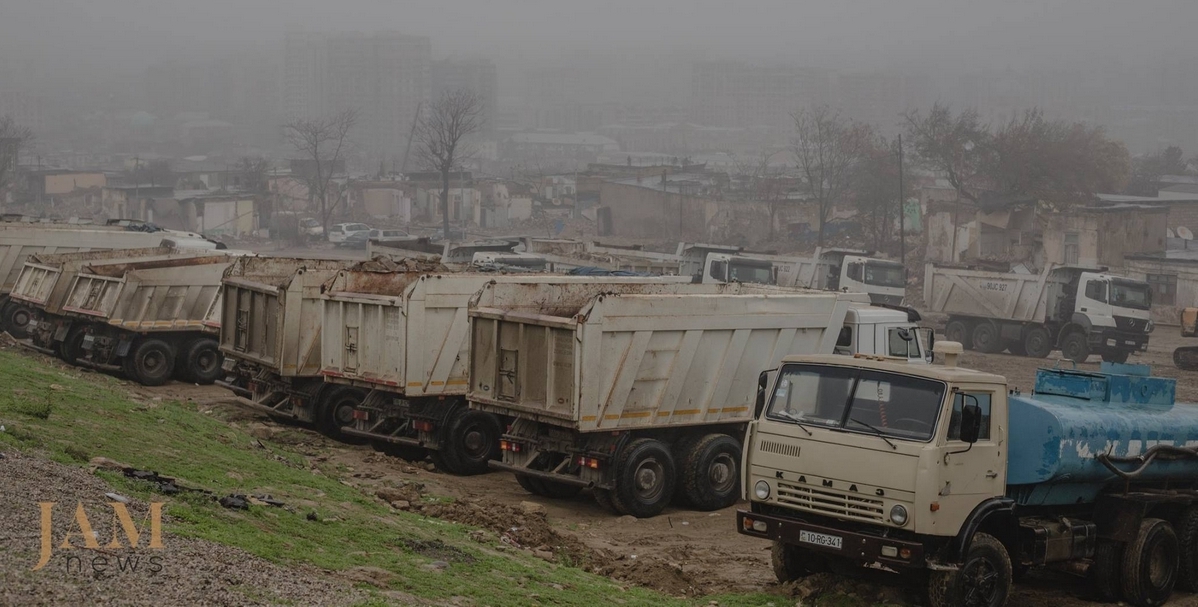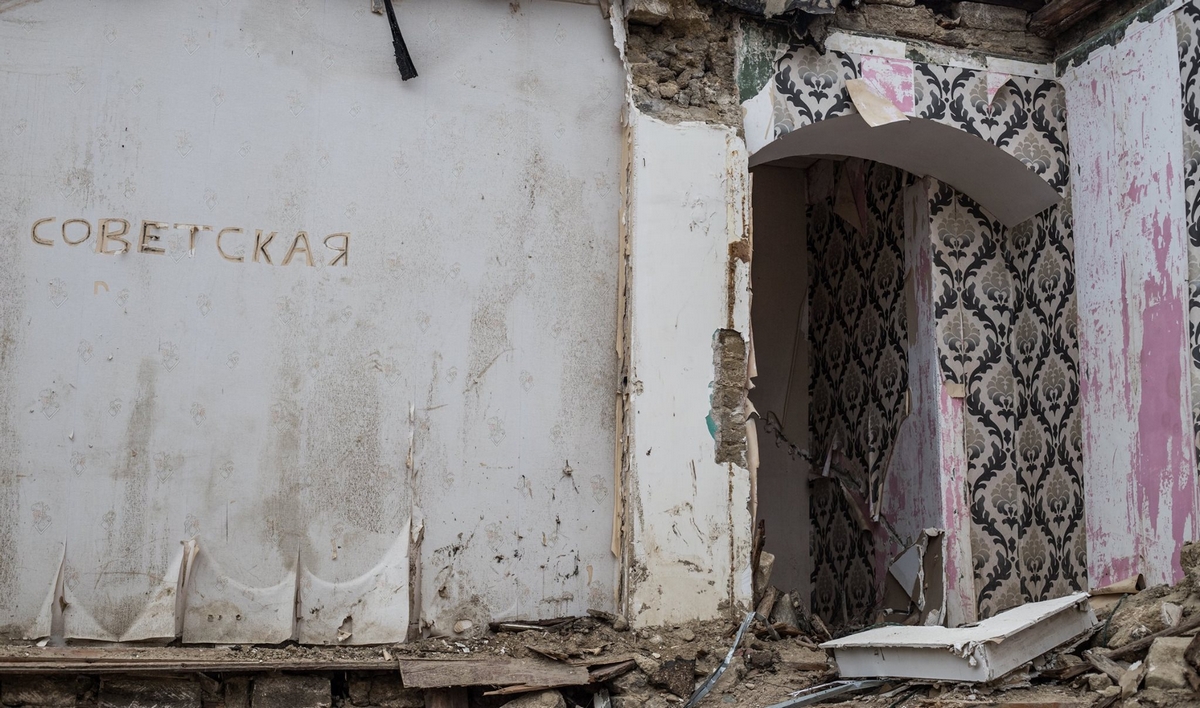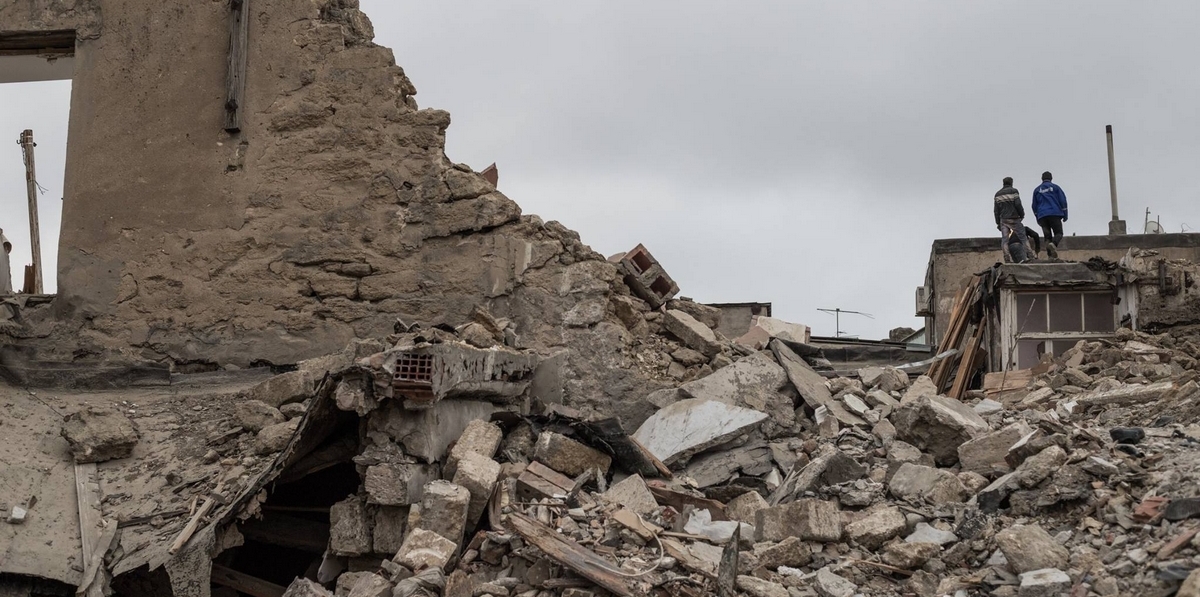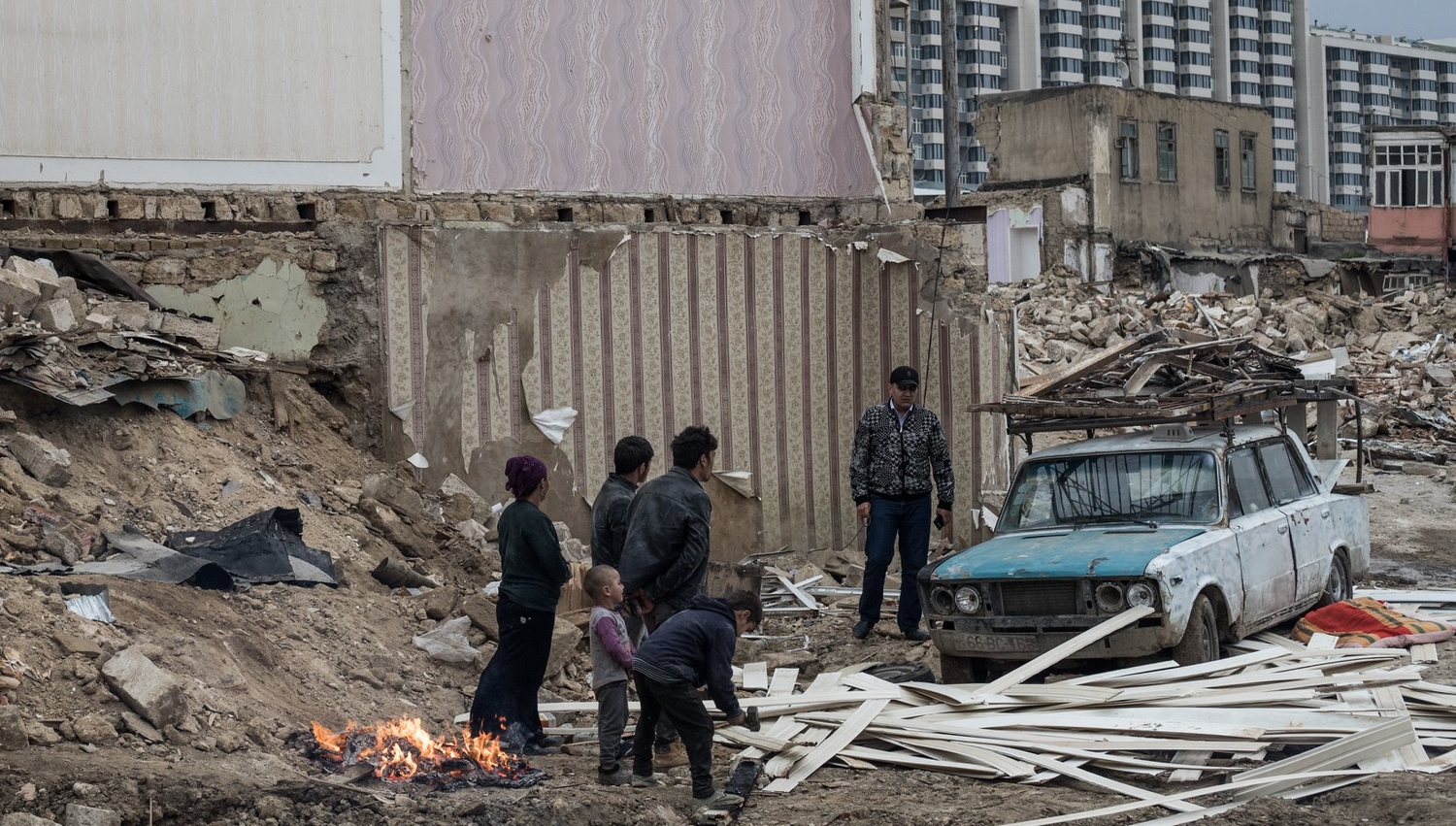One of Baku’s infamous neighbourhoods will soon disappear – Bakuvians on Sovetskaya
Sovetskaya is a historic quarter in the Yasamal district of Baku. It got its name from one of its major arteries bearing the same name.
It is famous for the fact that, throughout its hundred-year history, until the very beginning of its demolition, it has functioned according to its own rules.
This quarter was considered dangerous to ‘outsiders’, but its inhabitants were protected by a kind of ‘code of honour’ and ‘local authorities’.
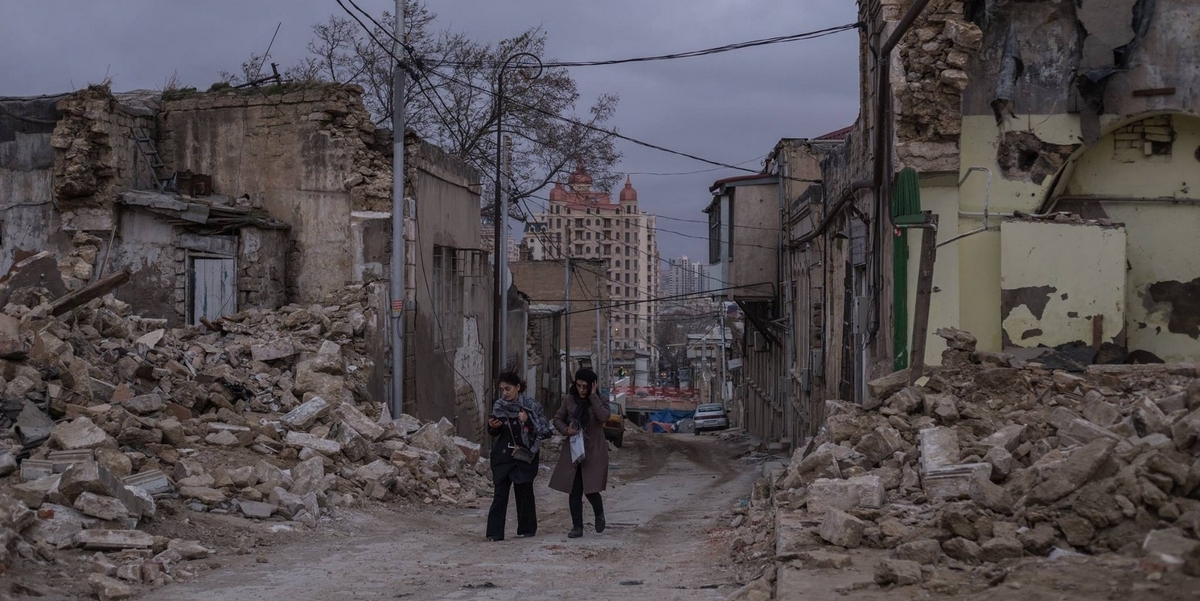
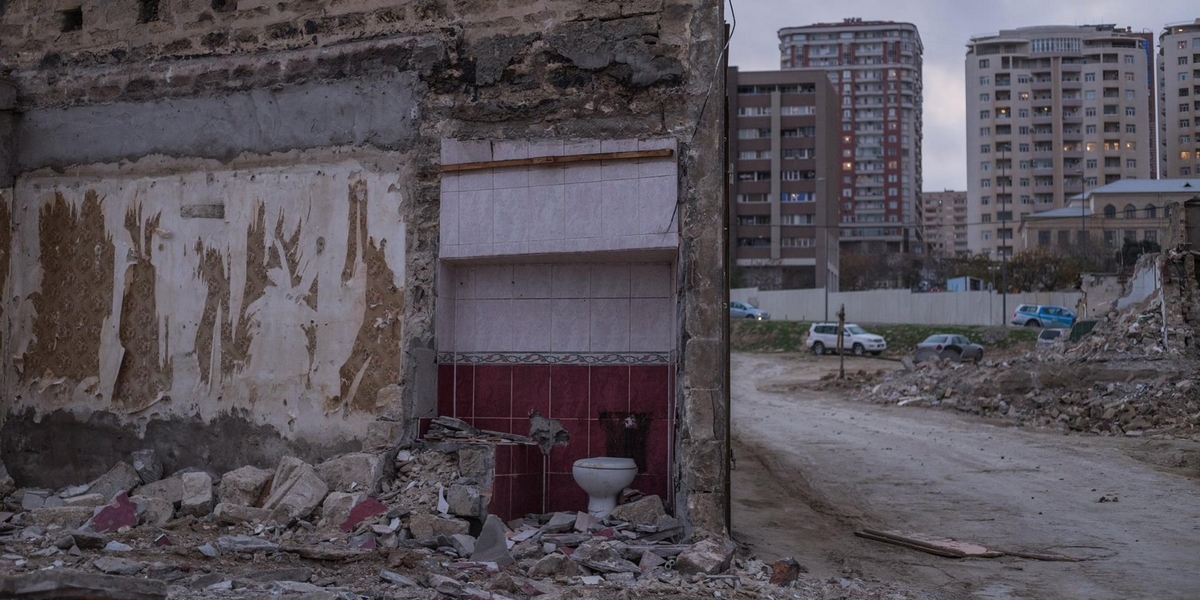
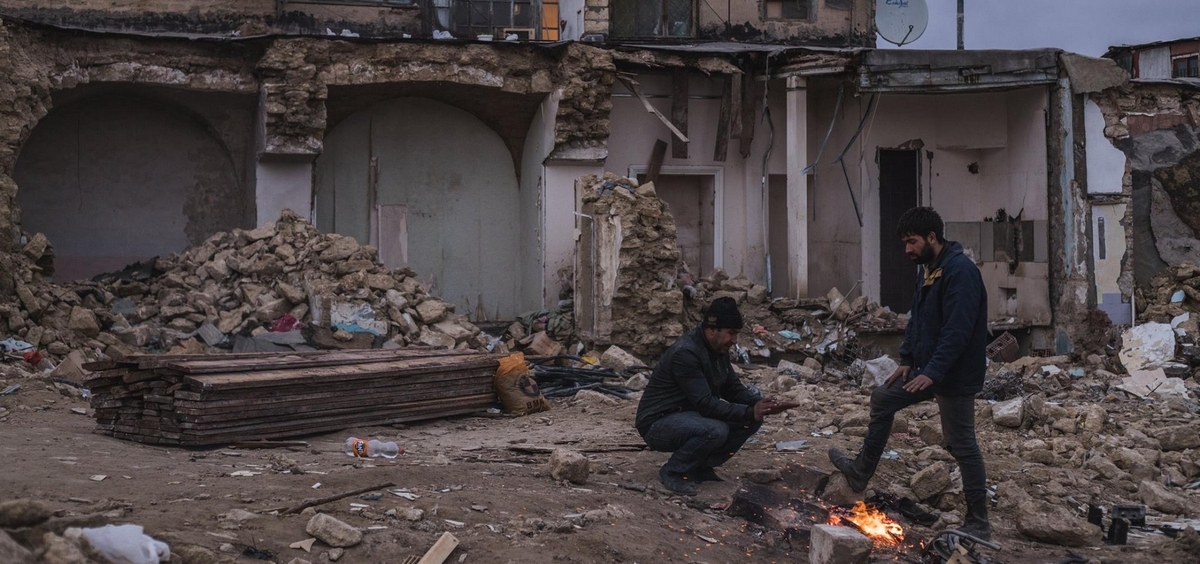
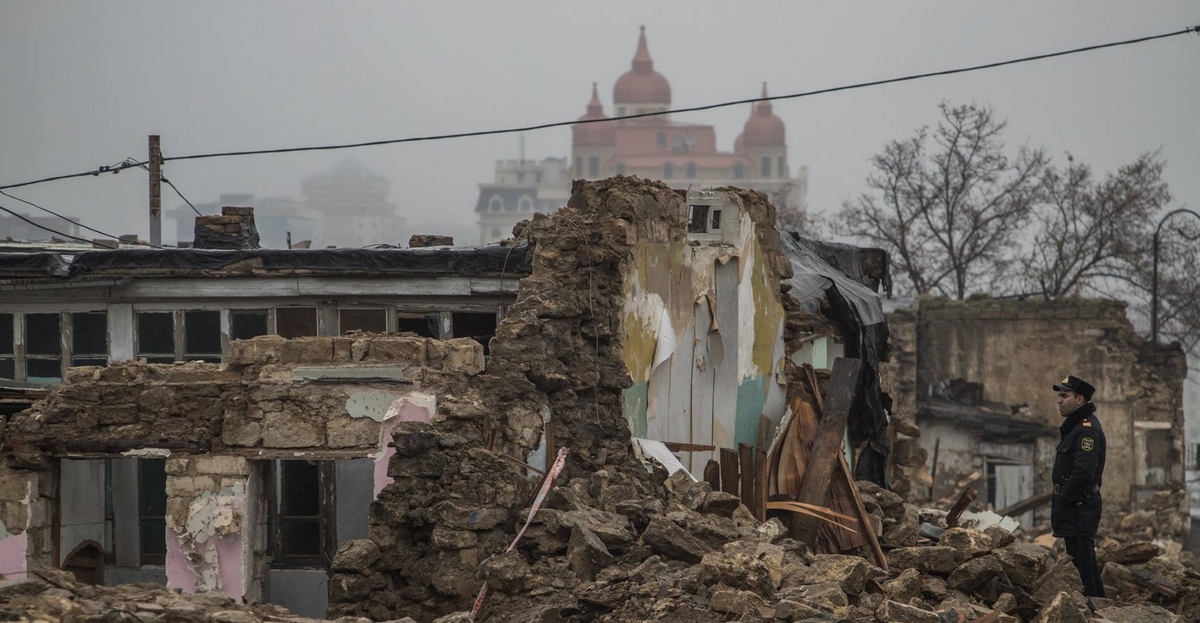
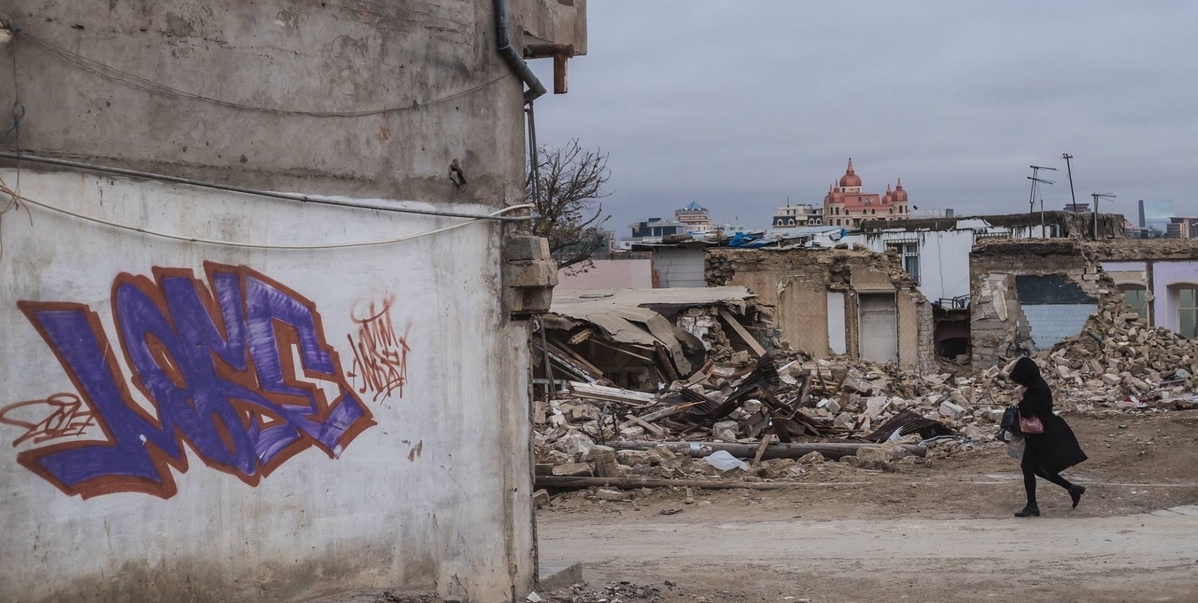
Along with elegant old buildings, 200 of which used to be protected by the state as architectural monuments, there were also a collection of dilapidated buildings, often built without any documents. Many of them were in disrepair.
Sovetskaya has long been on the chopping block. In 2011, a plan for the construction of parks and roads on this site appeared. The first stage of demolition was completed in 2016. Architectural monuments were simply excluded from the list of protected monuments and demolished.
The demolition of residential complexes in Sovetskaya was accompanied by numerous scandals, because many tenants of these homes considered the compensation offered by the authorities insufficient.

Now, the demolition of the remaining parts of Sovetskaya has begun. Heavy technical equipment is everywhere, often right on top of the rubble and ruins that have become a favorite spot for Baku photographers enamoured with the picturesque and dramatic scenes.
We asked Baku citizens to share their memories of the neighborhood.
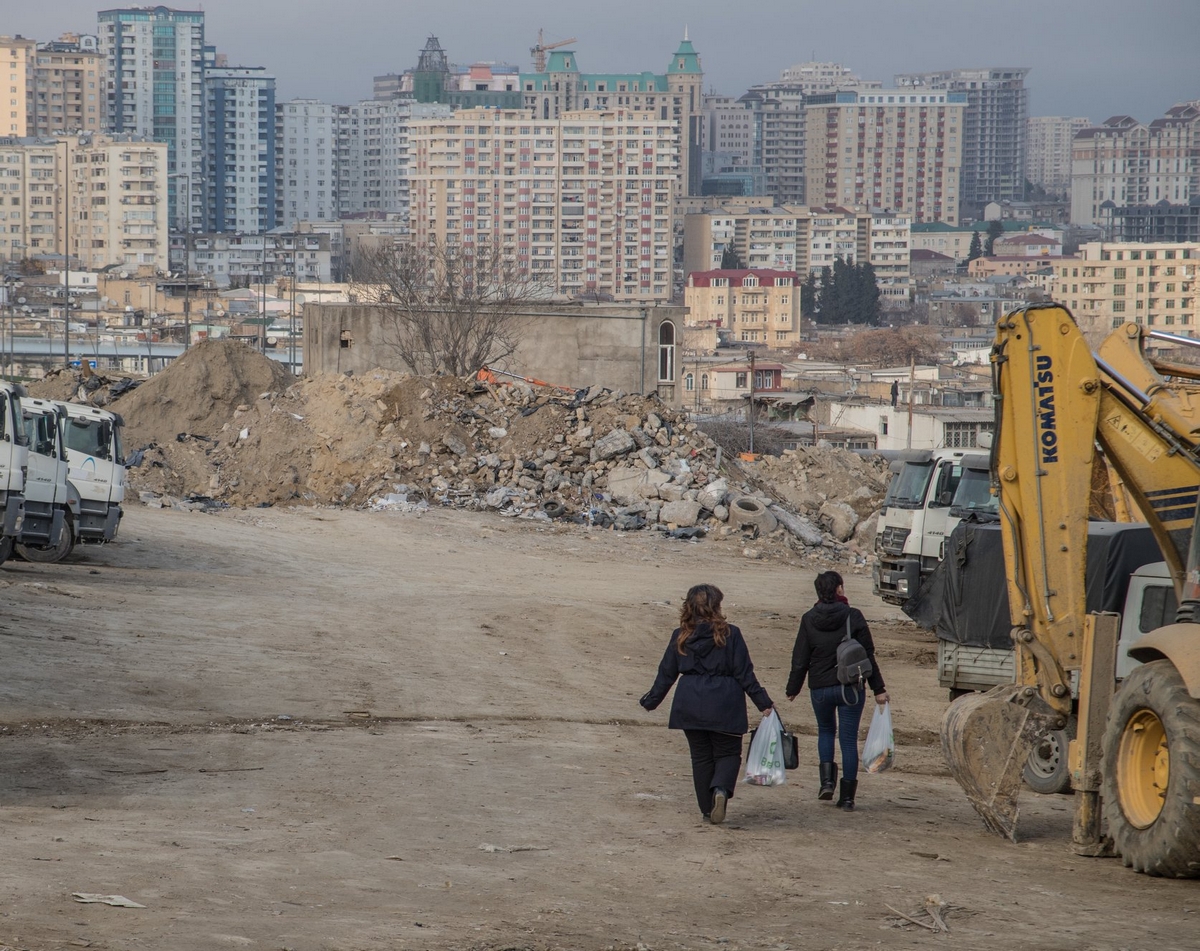
Togrul Valiyev:
“While many buildings in Torgovaya or Istiqlalliyet were built by Armenians, Jews and Russians, the Sovetskaya region was largely Azerbaijani. In fact, Sovetskaya is the history of Azerbaijani Baku at the beginning of the twentieth century. There are beautiful buildings with Italian courtyards…with bathrooms in the courtyard. There’s the Tazapir mosque, and a dozen other mosques of all different styles. There’s even a church.
“Here you can also find the homes of famous poets, writers and composers.
“I think some part should be preserved as an open-air museum, to be restored and preserved. Even if you are putting up a park, it would be interesting to walk around the park and see separate buildings that could be turned into hotels, restaurants, or something else.”
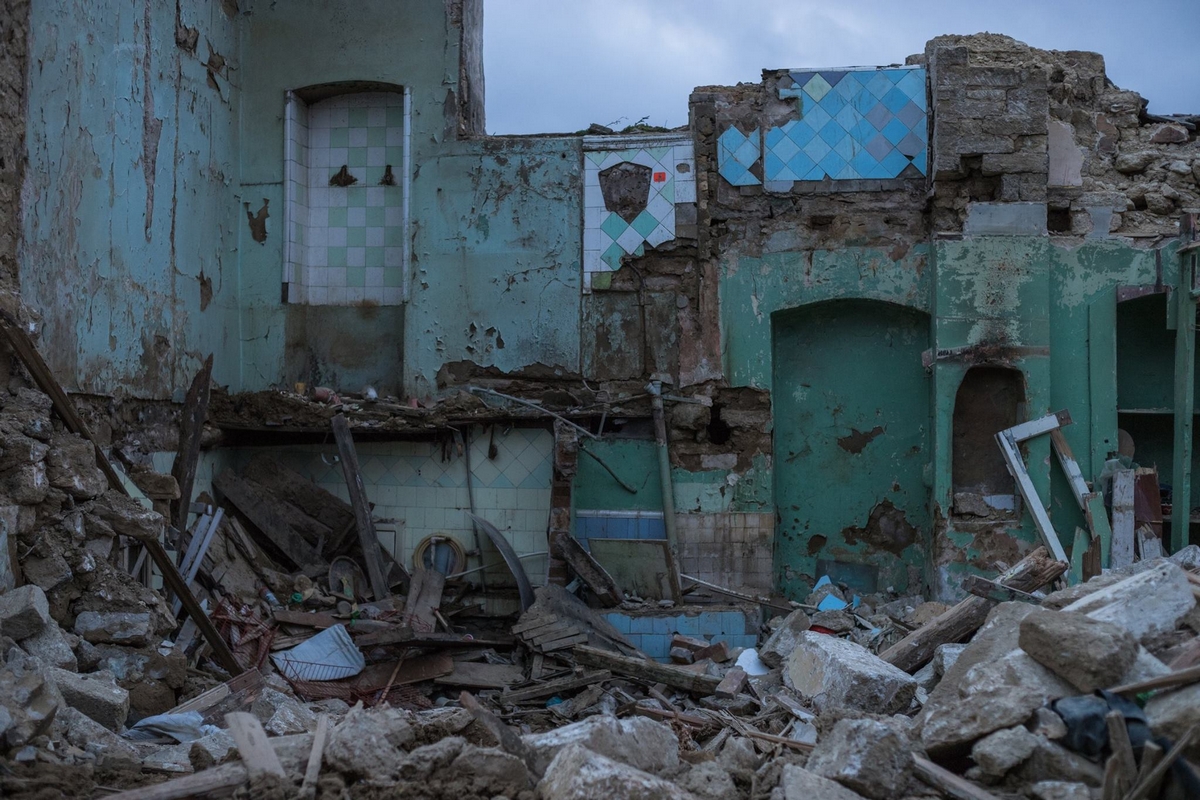
Esmira started living in Sovetskaya when she married a local guy. She talks about the 1990s.
“The guys in our yard loved to hit couples passing by. They tried humiliating men in front of their girlfriends or wives. I think there were shootouts at night. I say ‘I think’ because my husband wouldn’t let me look out of the window when we heard shots.
“They wouldn’t let new brides wash carpets in the yard in the summer. And sometimes, if the husband was not at home, the neighbours locked the girl in the apartment, which was especially unpleasant given that the toilet was sometimes in the yard.”
In those days, there were still no cleaning companies and carpets were cleaned in the old manner. According to the Sovetskaya ‘code of conduct’, it was inappropriate for a woman to even show skin below the knee in the courtyard.
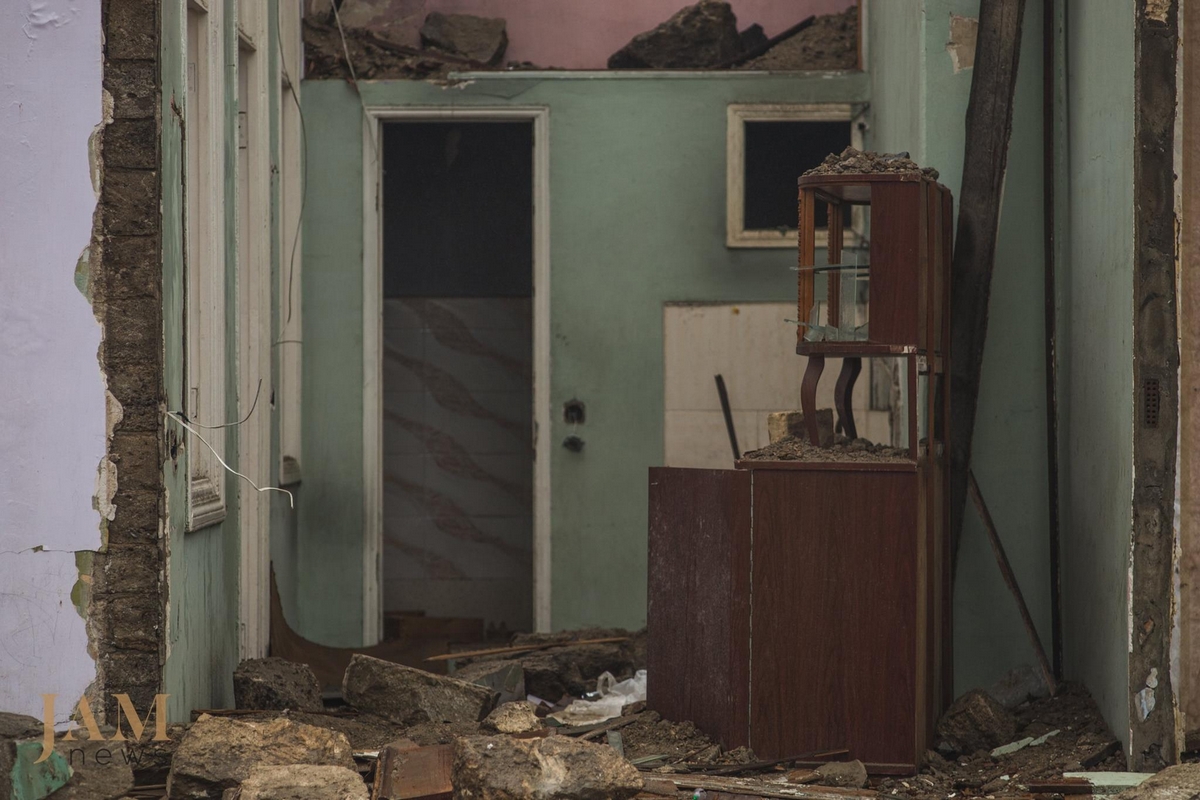
Sevinj has lived in Sovetskaya since the 70s.
“This story happened in the 80s. One night a ghost appeared on one of the streets of Sovetskaya. People were shocked, they said it was the ghost of the Imam. He appeared every night for a month, and the place of his appearance became an object of pilgrimage. But then it turned out that some scammer had set up a projector there and deceived people.”
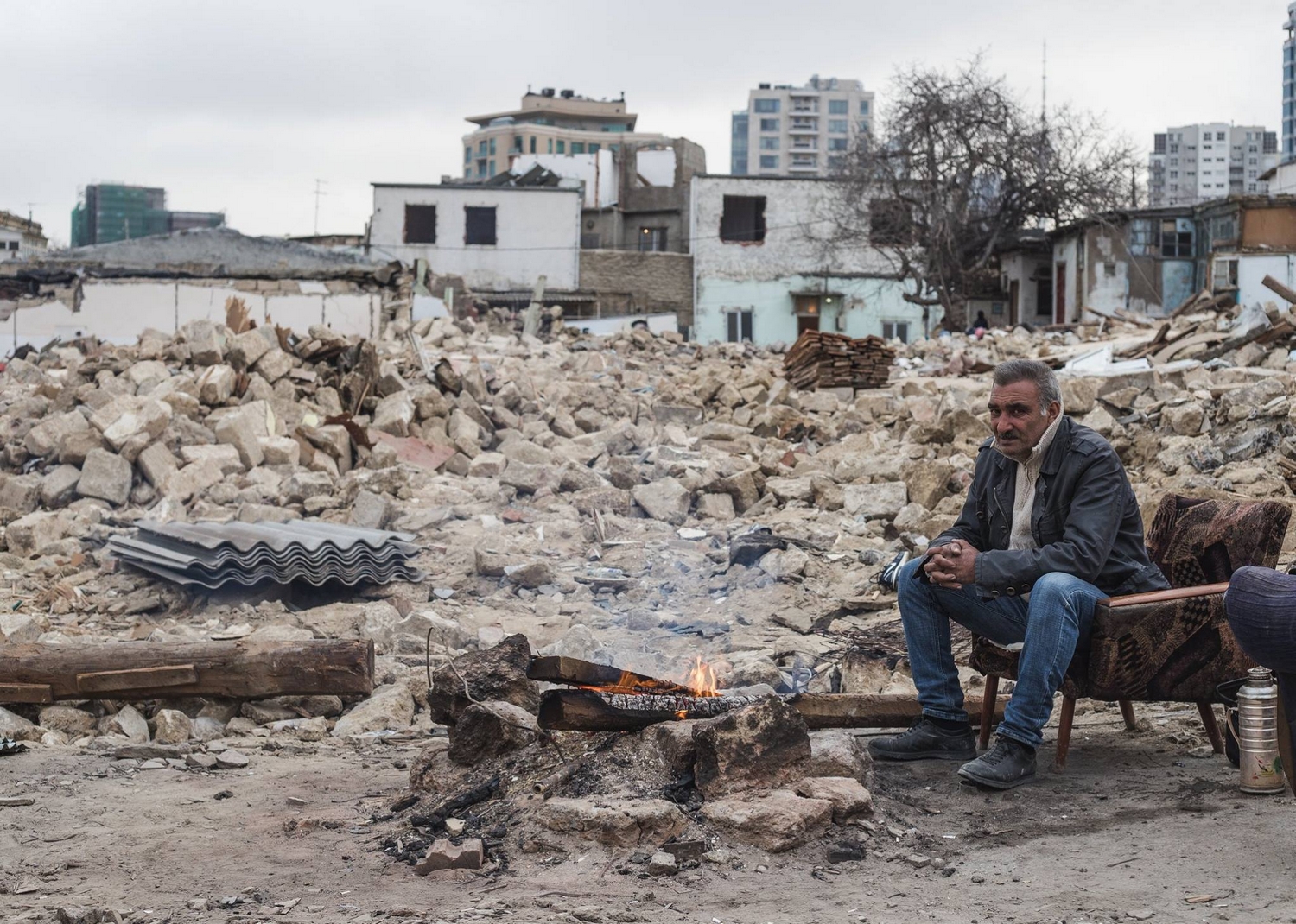
Maharram lived in another “dangerous” area – Kubinka.
“This story happened in 2000. I decided to walk home from the university through Sovetskaya. I had breeches on, a Nirvana t-shirt, and my hair was longer than customary in those parts. I was passing through, when these boys told me: ‘Come here’. I immediately began to run away, and they went after me. I managed to climb on top of the nearest garage. They tried getting up, but I kicked their fingers away.
“They shouted ‘sooner or later, you’ll have to come down!’ and waited for me. I was hungry and wanted to go home.
“But I was lucky – suddenly an acquaintance from Kubinka passed through the courtyard. I do not remember his name. He was a muscled guy, so we used to call him Stallone. He punched one of those boys so hard that the others fled.”

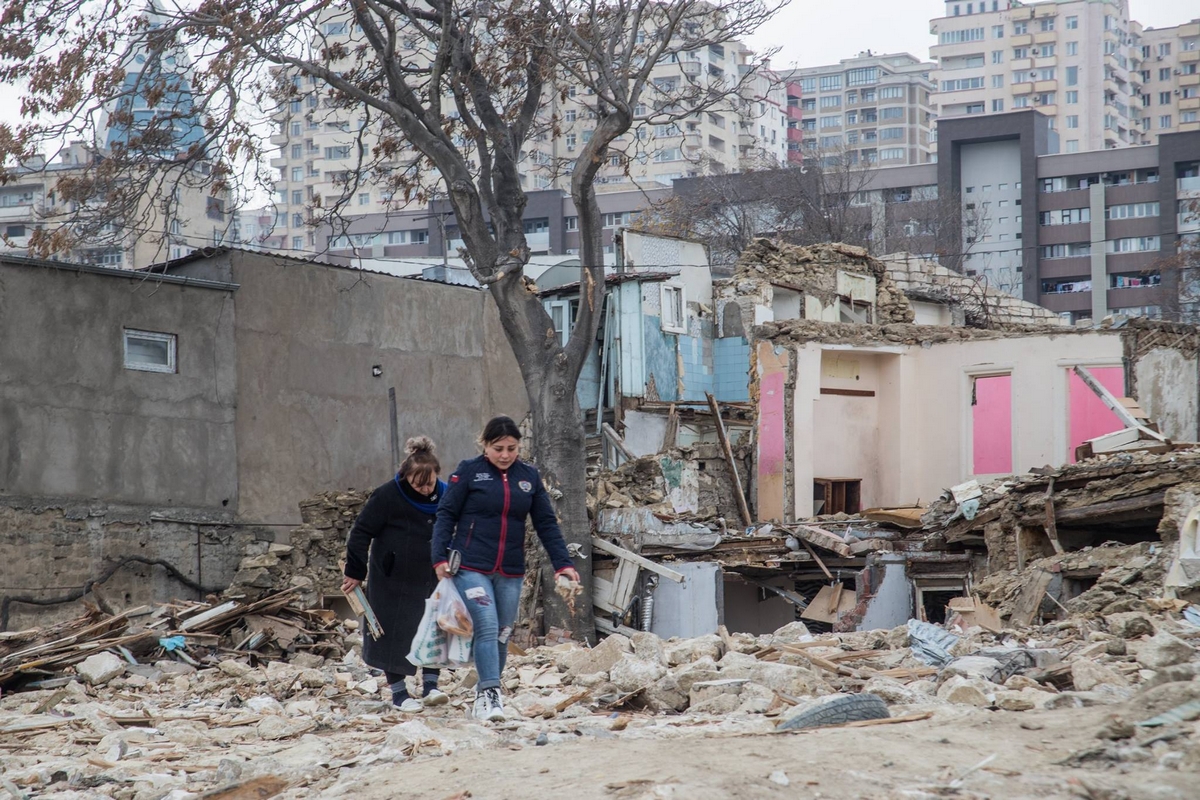
Fahreddin lived in Sovetskaya from the age of 55 to the age of 68 when his house was demolished.
“The police stayed away from the courtyards unless things got serious.
“We had our own ‘authorities’, for example, Uncle Qulam. He kept order in his station. Those who went to the country for the summer knew that a thief would not enter their courtyards, and therefore locked their homes up with a small lock – just enough to prevent a dog or cat from getting in.”
“Once, our neighbour Elish brought a car back from Leningrad [ed. St Petersburg]. It was stolen the next morning.
“Elish went to Qulam, who was standing and leaning up against a wall with an indifferent look on his face – as befits an ‘authority’. Elish approached him, and told him that his car had been stolen.
“Uncle Qulam told him not to worry and go home. He himself contacted the authorities of various districts of Baku, and the stolen car that was returned by 4 o’clock in the afternoon. He respectfully handed the keys over to Elish. No-one asked any questions.”
